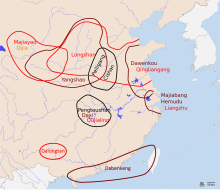
The Peiligang culture was a Neolithic culture in the Yi-Luo river basin that existed from about 7000 to 5000 BC. Over 100 sites have been identified with the Peiligang culture, nearly all of them in a fairly compact area of about 100 square kilometers in the area just south of the river and along its banks.

The Yangshao culture was a Neolithic culture that existed extensively along the middle reaches of the Yellow River in China from around 5000 BC to 3000 BC. The culture is named after the Yangshao site, the first excavated site of this culture, which was discovered in 1921 in the town of Yangshao in western Henan by the Swedish geologist Johan Gunnar Andersson (1874–1960). The culture flourished mainly in Henan, as well as the neighboring provinces of Shaanxi and Shanxi.

The Longshanculture, also sometimes referred to as the Black Pottery Culture, was a late Neolithic culture in the middle and lower Yellow River valley areas of northern China from about 3000 to 1900 BC. The first archaeological find of this culture took place at the Chengziya Archaeological Site in 1928, with the first excavations in 1930 and 1931. The culture is named after the nearby modern town of Longshan in Zhangqiu, Shandong. The culture was noted for its highly polished black pottery. The population expanded dramatically during the 3rd millennium BC, with many settlements having rammed earth walls. It decreased in most areas around 2000 BC until the central area evolved into the Bronze Age Erlitou culture. The Longshan culture has been linked to the early Sinitic . According to the area and cultural type, the Longshan culture can be divided into two types: Shandong Longshan and Henan Longshan. Among them, Shandong Longshan Cultural Site includes Chengziya Site; Henan Longshan Cultural Site includes Dengfeng Wangchenggang Site in Wangwan, Taosi Site and Mengzhuang Site in Hougang.
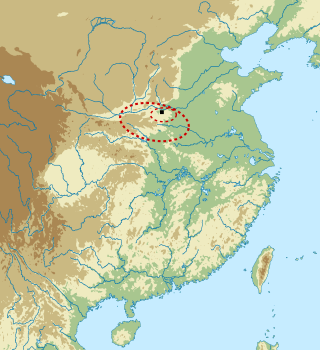
The Erlitou culture was an early Bronze Age society and archaeological culture. It existed in the Yellow River valley from approximately 1900 to 1500 BC. A 2007 study using radiocarbon dating proposed a narrower date range of 1750–1530 BC. The culture is named after Erlitou, an archaeological site in Yanshi, Henan. It was widely spread throughout Henan and Shanxi and later appeared in Shaanxi and Hubei. Most archaeologists consider Erlitou the first state-level society in China. Chinese archaeologists generally identify the Erlitou culture as the site of the Xia dynasty, but there is no firm evidence, such as writing, to substantiate such a linkage, as the earliest evidence of Chinese writing dates to the Late Shang period.

The Dawenkou culture was a Chinese Neolithic culture primarily located in the eastern province of Shandong, but also appearing in Anhui, Henan and Jiangsu. The culture existed from 4300 to 2600 BC, and co-existed with the Yangshao culture. Turquoise, jade and ivory artefacts are commonly found at Dawenkou sites. The earliest examples of alligator drums appear at Dawenkou sites. Neolithic signs, perhaps related to subsequent scripts, such as those of the Shang dynasty, have been found on Dawenkou pottery. Additionally, the Dawenkou practiced dental ablation and cranial deformation, practices that disappeared in China by the Chinese Bronze Age.

The Majiayao culture was a group of neolithic communities who lived primarily in the upper Yellow River region in eastern Gansu, eastern Qinghai and northern Sichuan, China. The culture existed from 3300 to 2000 BC. The Majiayao culture represents the first time that the upper Yellow River region was widely occupied by agricultural communities and it is famous for its painted pottery, which is regarded as a peak of pottery manufacturing at that time.

The Hemudu culture was a Neolithic culture that flourished just south of the Hangzhou Bay in Jiangnan in modern Yuyao, Zhejiang, China. The culture may be divided into early and late phases, before and after 4000 BC respectively. The site at Hemudu, 22 km northwest of Ningbo, was discovered in 1973. Hemudu sites were also discovered at Tianluoshan in Yuyao city, and on the islands of Zhoushan. Hemudu are said to have differed physically from inhabitants of the Yellow River sites to the north. Some authors propose that the Hemudu Culture was a source of the pre-Austronesian cultures.

The Qijia culture was an early Bronze Age culture distributed around the upper Yellow River region of Gansu and eastern Qinghai, China. It is regarded as one of the earliest bronze cultures in China.

The Erligang culture is a Bronze Age urban civilization and archaeological culture in China that existed from approximately 1600 to 1400 BC. The primary site, Zhengzhou Shang City, was discovered at Erligang, within the modern city of Zhengzhou, Henan, in 1951.
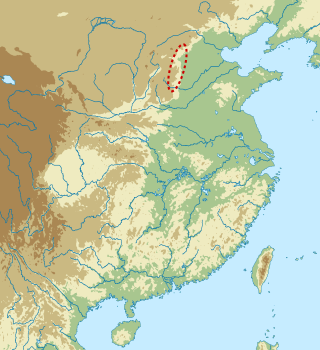
The Cishan culture was a Neolithic culture in northern China, on the eastern foothills of the Taihang Mountains. The Cishan culture was based on the farming of broomcorn millet, the cultivation of which on one site has been dated back 10,000 years. The people at Cishan also began to cultivate foxtail millet around 8700 years ago. However, these early dates have been questioned by some archaeologists due to sampling issues and lack of systematic surveying.

The Pengtoushan culture was a Neolithic culture located around the central Yangtze River region in northwestern Hunan province, China. It dates to around 7500–6100 BC, and was roughly contemporaneous with the Peiligang culture to the north. It is named after the type site at Pengtoushan.

The Qujialing culture was a Neolithic civilisation centered primarily on the middle Yangtze River region in Hubei and Hunan, China. The culture succeeded the Daxi culture and reached southern Shaanxi, northern Jiangxi and southwest Henan. Artefact types unique to the culture include ceramic balls and painted spindle whorls; the latter were inherited by the succeeding Shijiahe culture.
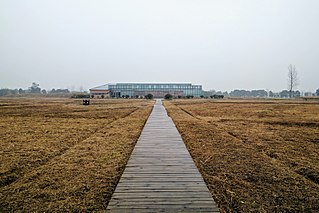
Chengtoushan was a Neolithic settlement located on the northwestern edge of Dongting Lake in Li County, Hunan, China.

Zhongyuan (Chinese: 中原; pinyin: Zhōngyuán), the Central Plain(s), also known as Zhongtu (Chinese: 中土; pinyin: Zhōngtǔ, lit. 'central land') and Zhongzhou (Chinese: 中州; pinyin: Zhōngzhōu, lit. 'central region'), commonly refers to the part of the North China Plain surrounding the lower and middle reaches of the Yellow River, centered on the region between Luoyang and Kaifeng. It has been perceived as the birthplace of the Chinese civilization. Historically, the Huaxia people viewed Zhongyuan as 'the center of the world'. Human activities in the Zhongyuan region can be traced back to the Palaeolithic period.
Samrong Sen on the east bank of the Stueng Chinit River is a prehistoric archaeological site in the Kampong Chhnang Province, Cambodia. Consisting of a very large fluviatile shell midden, it flourished in particular from 1500 BC to 500 BC.

Xu Xusheng, also known by his courtesy name Xu Bingchang, was a Chinese archaeologist, historian, and explorer born in Tanghe, Henan Province. Best known for his discovery of the Erlitou culture in 1959, he was one of China's most important and respected archaeologists and historians of the twentieth century, providing a model of archaeological methodology for future Chinese archaeologists. He also was president of Beijing Normal University.
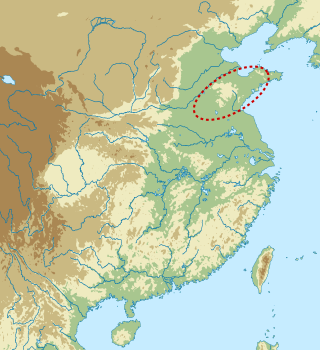
The Yueshi culture was an archaeological culture in the Shandong region of eastern China, dated from 1900 to 1500 BC. It spanned the period from the Late Neolithic to the early Bronze Age. In the Shandong area, it followed the Longshan culture period and was later replaced by the Erligang culture.
The Zhou–Chu War was a military conflict between the Zhou dynasty under King Zhao and the state of Chu from 961 to 957 BC. King Zhao personally led at least two major campaigns against Chu and other states and tribes of the middle Yangtze region, initially conquering the lands north of the Yangtze and the Han River valley. Eventually, however, the Zhou forces suffered a crushing defeat, with half of their armed forces as well as King Zhao killed, subsequently losing control of much conquered territory. The war ended the era of Western Zhou's early expansion and forced it into the defense against foreign aggressors. On the other side, Chu consolidated its de facto independence and would continue to grow into one of the most powerful states of China.

In 2001, the Institute of Archaeology of the Chinese Academy of Social Sciences organized a poll for China's 100 major archaeological discoveries in the 20th century. The participants included eight national-level institutions for archaeology and cultural relics, provincial-level archaeological institutes from 28 provinces, municipalities, and autonomous regions, as well as from Hong Kong, the archaeological departments of 11 major national universities, and many other scholars in Beijing. After three months and three rounds of voting, the results were announced on 29 March 2001 and were published in the journal Kaogu (Archaeology). In 2002, the Chinese Academy of Social Sciences Press published the book China's 100 Major Archaeological Discoveries in the 20th Century (二十世纪中国百项考古大发现), with more than 500 pages and 1,512 pictures.
